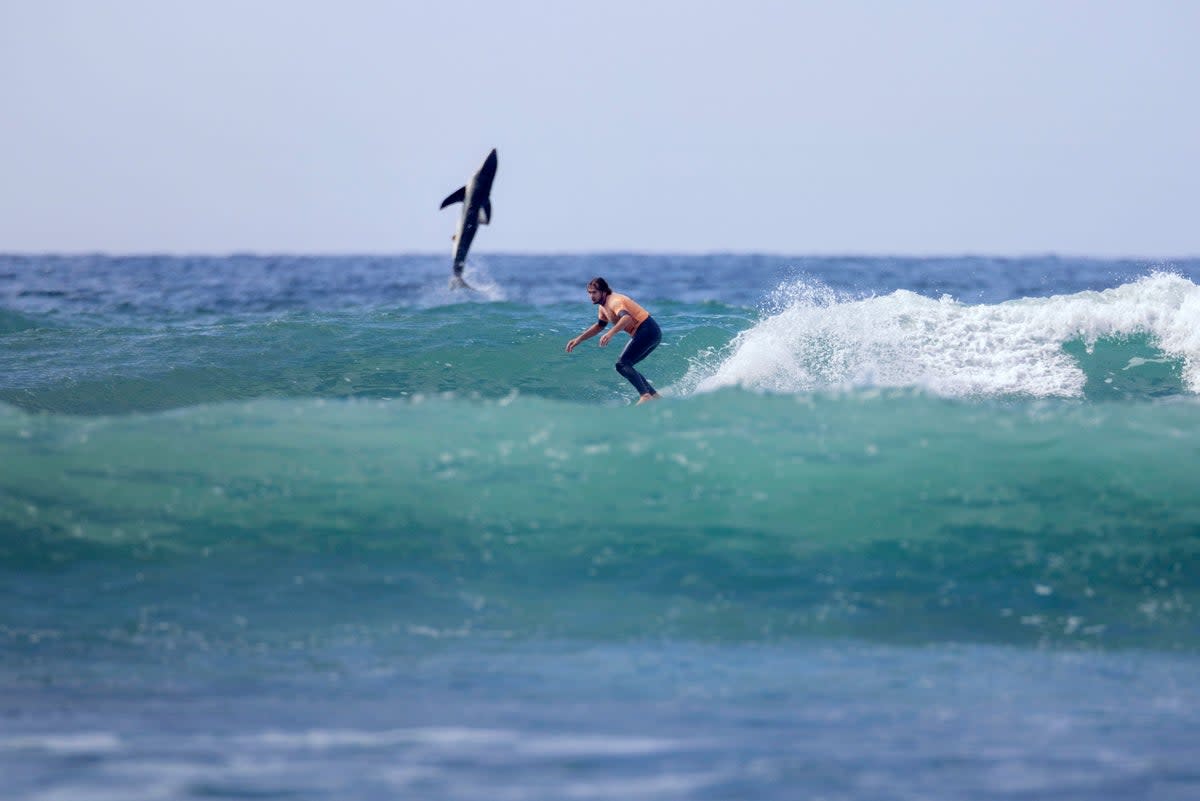Great white shark photobombs epic photo of a surfer: ‘Photograph of a lifetime’

A California surfer was captured riding the waves next to a great white shark in an incredible photograh.
Last month, Jordan Anast, a California-based photographer, was photographing the San Onofre Surf Club in San Diego County when he snapped a miraculous image of surfer Tyler Warren.
Mr Anast told CNN that he hadn’t even known that he caught Mr Warren surfing next to a shark emerging from the water until he “looked closely after, and saw the structures of the fins.” At that point, he said “realized it was a great white shark.”
The photographer shared that he managed to get six images of the great white shark breaching and that he wasn’t all too disturbed by the moment because of how present sharks are in the state of California.
“They’re always out there, everywhere in California,” he told CNN.
The photos have since gone viral on social media, prompting plenty of media attention and people remarking, “Now this is a photobomb!”
Mr Anast added in an interview with NBC News that “it’s the photograph of a lifetime.”
Great whites are considered the largest predatory fish on Earth, according to National Geographic, and can grow “to an average of 15 feet in length, though specimens exceeding 20 feet and weighing up to 5,000 pounds have been recorded.”
The outlet also notes that the animals can swim up to 15 miles per hour and often breach like whales “when attacking prey from underneath.”
Attacks by a great white shark are often not fatal, National Geographic says, as the creatures are “naturally curious” and “sample bite” their human targets before releasing them. The publication emphasises that fatal attacks “are typically cases of mistaken identity: Swimmers and surfers can look a lot like their favorite prey—seals—when seen from below.”

